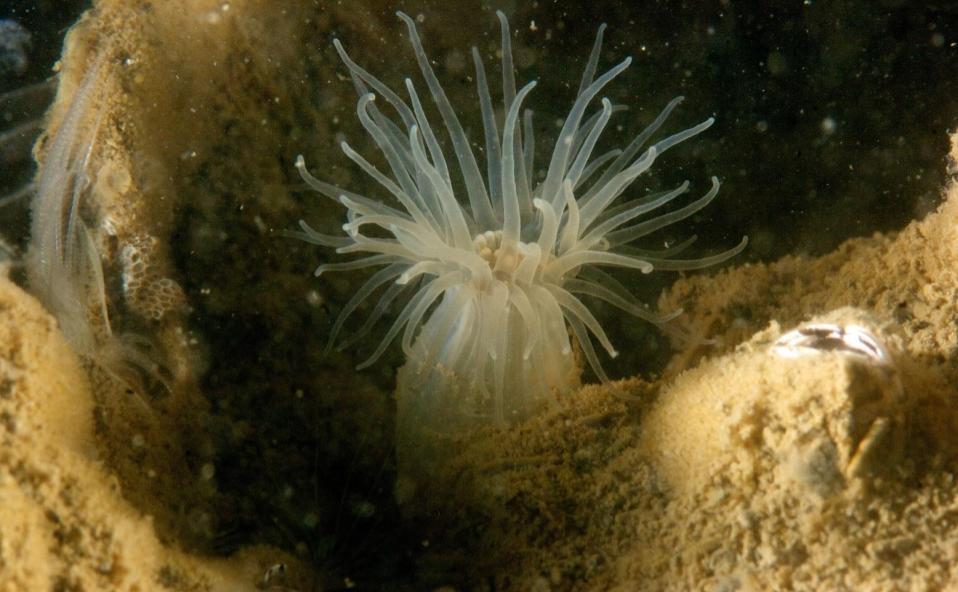A man-made oyster reef finished a year ago next to Fort Carroll in the middle of the Patapsco River is in excellent condition. Recent monitoring results found most of the three million young oysters surviving and growing rapidly. The results are another encouraging milestone in an effort to return oysters to Baltimore waters, and throughout the Chesapeake Bay.
“Oysters are resilient creatures. If we give them the habitat they need they will settle down and form a community, begin filtering our water, and provide a home for other marine life,” said Dr. Allison Colden, Maryland Senior Fisheries Scientist with the Chesapeake Bay Foundation (CBF). “Baltimore is demonstrating it can be a flourishing home for underwater life.”
CBF is a member of the Chesapeake Oyster Alliance, a multi-year, collaborative effort to add 10 billion new oysters by 2025 in Virginia and Maryland waters. The Alliance is designed to spark governmental action, public attention, and funding to accelerate ongoing oyster recovery efforts in the Chesapeake Bay.

Photo credit: Michael Eversmier
To that end, the oyster reef was planted last spring next to Fort Carroll, the Civil War fort built on an island near the Key Bridge. Chunks of granite were used as a bed for the reef. Tons of old oyster shell were piled on top of the stone. On each shell was attached an average of 12 juvenile oyster “spat” barely visible to the eye. The spat were set on the oyster shells at CBF’s Oyster Restoration Center in Shady Side, and placed on the reef by the organization’s restoration vessel, the Patricia Campbell.
A year later, about 75 percent of those baby oysters have survived their first winter, and have grown to an average of more than an inch and a half in size, some to nearly three inches. Another encouraging sign, divers found the oysters thriving despite silt in the river. In fact, the reef was filled with large clumps of oysters growing vertically above the silt.
The construction, seeding, and monitoring of the 1.1 acre reef was supported by the Maryland Department of Transportation Port Administration, Maryland Environmental Service, and the Abell Foundation.
Baltimore was once a hub of the commercial oyster industry in Maryland. Oysters also were known to grow in the Patapsco, at least near the mouth. But the oyster population is now a fraction of its historic size, a victim of overfishing, disease, and pollution.
Knowing that history, what divers observed at the Fort Carroll reef and recorded with underwater photography was all the more exciting. Live oysters were feeding and growing. And the reef already was attracting other marine life, such as anemone, barnacles, mussels, mud crabs, and grass shrimp. In all, at least 13 different species were observed living on the new reef. This relative abundance of life demonstrates what scientists have known for years: oysters are a “keystone species” in the Chesapeake Bay ecosystem; their reefs act as primary building blocks of the food chain.
The new reef, a little more than an acre, is near to a companion reef started in 1995. That older reef has been gradually built over the years, with about 150,000 oysters being added each of the past few years through the Great Baltimore Oyster Partnership and the Living Classrooms Foundation. Business representatives, students, and other volunteers grow oysters in cages at various sites around the Inner Harbor, and then deploy the juvenile oysters at the companion reef. The Partnership aims to have at least 5 million oysters added total to both reefs by 2020. CBF and the Waterfront Partnership of Baltimore’s Healthy Harbor Initiative are founding members of the group.



Write a Letter to the Editor on this Article
We encourage readers to offer their point of view on this article by submitting the following form. Editing is sometimes necessary and is done at the discretion of the editorial staff.